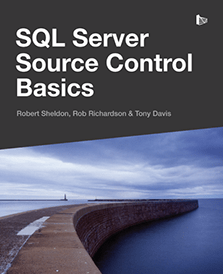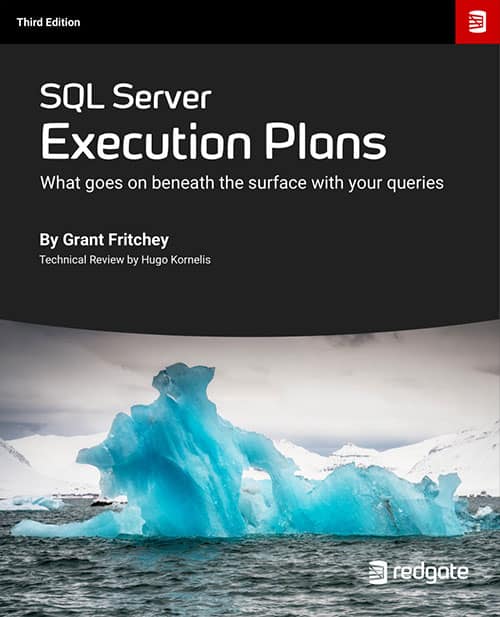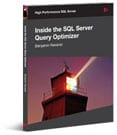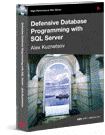Need to learn a new technology fast? Get skilled up quickly with a book.
Redgate Books is a technical publisher specializing in database and programming technologies.
Our authors are practitioners at the top of their game who have the urge to share their knowledge and expertise with others.
We now publish in all the current reading formats, including PDF, Kindle, and cellulose editions.

For efficient team-based database development, and reliable and repeatable database deployments, going without source control isn't really optional any more. Quite apart from making it easier to work together, roll back, and share changes, it's the cornerstone of better change management and continuous integration.
This book provides just the right combination of theory and practical example to get you started quickly.

(3rd Edition, September 2018)
If a query is performing poorly, and you can't understand why, then that query's execution plan will tell you not only what data set is coming back, but also what SQL Server did, and in what order, to get that data. It will reveal how the data was retrieved, and from which tables and indexes, what types of joins were used, at what point filtering, sorting and aggregation occurred, and a whole lot more. These details will often highlight the likely source of any problem.
This book has the singular goal of teaching you how to read SQL Server Execution plans, so you can work out the root cause of poor performance and how to fix it.

(1st Edition, November 2010)
This book will take you from the fundamentals of Statistics, Cost Estimation, Index Selection, and the Execution Engine, and guide you through the inner workings of the Query Optimization process, and throws in a pragmatic look at Parameterization and Hints along the way.
An essential purchase for your SQL Server library

The goal of Defensive Programming is to produce resilient code that responds gracefully to the unexpected. To the SQL Server programmer, this means T-SQL code that behaves consistently and predictably in cases of unexpected usage, doesn't break under concurrent loads, and survives predictable changes to database schemas and settings. Inside this book, you will find dozens of practical, defensive programming techniques that will improve the quality of your T-SQL code and increase its resilience and robustness.
'Defensive Database Programming with SQL Server' should be required reading for all SQL practitioners.

(1st Edition, April 2009)
When information is exchanged in XML format, you need an agreement between the sender and receiver about the structure and content of the XML document. This "agreement" takes the form of an XSD (XML Schema Definition Language) Schema. Jacob Sebastian's book explains all.
Finally a book that can explain the principles of XSD schemas in an easy to understand way.